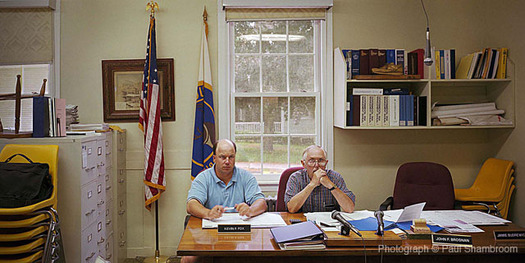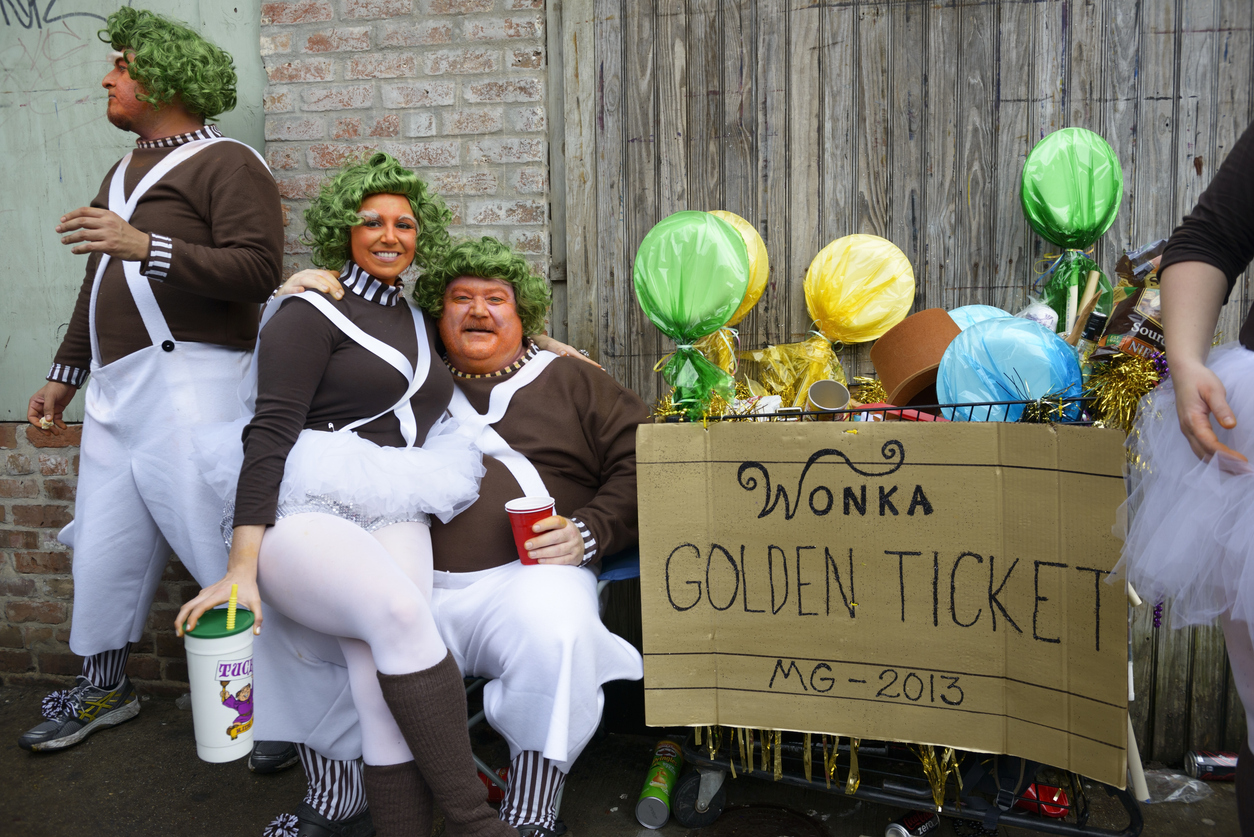
August 5, 2005
Small Town Meetings

Photo: Paul Shambroom, Buckland, Massachusetts (population 1,943) Board of Selectmen, July 27, 1999.
We live in Falls Village, Connecticut, the third smallest town in Connecticut with a population of 1,288.
Some months ago, I attended a local zoning commission meeting to argue for a more modern approach to “home office” regulations. The previous regulations were vague and basically made our design business illegal, since we have more than family members working in our studio.
The new zoning regulations were going to allow craft industries to have up to six employees, have unregulated signage, endless parking, and allow the waste and refuse of “pottery” businesses to drain into nearby streams. I argued that this was an anachronism, and that modern computer-based home businesses contributed more to the community without wear-and-tear on the environment. We support eight people in Falls Village and neighboring towns — and only add to the traffic by having a couple of FedEx deliveries a week. We have no signs that say Winterhouse Studio. I won the argument (successfully elevating design above crafts for the first time in my life). In the new zoning regulations, we can have numerous office employees without having to apply for a special variance.
But the meeting itself was memorable. Eight zoning commissioners sat around a long fold-out table in an open space at town hall. Half of them had their backs to the audience. There were about fifteen other villagers in attendance. I had submitted a written document to the secretary of the zoning commission in advance of the meeting; my presentation was effectively reading it into the record. Parliamentary procedure was closely followed, and my remarks were timed.
Zoning regulations are how a town designs its future. They determine what kind of development is encouraged, and what kind is discouraged. Falls Village was established in 1738, and the “Village Business Zone” seeks to preserve the many historic buildings (of widely varying architectural styles). Today, there is virtually no viable retail business, meaning residents have to drive to neighboring towns for dry cleaning, hardware and shopping. The new zoning regulations create a “Steep Slope Overlay” that would place special restrictions on our mountainside, discouraging McMansions that would destroy pristine mountain vistas or, more importantly perhaps, be difficult for fire and ambulance squads to reach.
In Meetings, Paul Shambroom, a photographer from Minnesota, visited 150 local government meetings in 32 states. The photographs are remarkable in presenting the physical details by which towns gather to determine how they live. There are American flags in fifteen out of twenty-two photographs on his site. There are town plans or drawings in seven of them. In only four are men wearing ties. In the book, actual meeting notes are printed on bible paper. These, too, are remarkable in the mundane documentation of communities governing themselves: speed bumps for the new mini-mall, new sewer lines and fire hydrants, or a nature trail proposed by a local corporation “next to the creek.” My favorite passage is, “Bob Worm has bought Jodi Finkes house. They are going to fill in and make a car port. We ask that they keep it looking nice.”
Last week, I went to another meeting in a neighboring town to explore possibilities for low-income housing in the area. Housing for working families is desperately needed as the real estate market has made it almost impossible for young people to live where they grow up. (We have incredible problems finding housing for our employees as well.) But the difference between bad low-income housing and well-designed, potentially sustainable new construction is a wonderful challenge. The Mayor (we call them “First Selectmen” here in rural Connecticut) ranted about how he’s tried to get people interested in building a state-of-the-art “transfer” station (in local parlance, this means a dump or recycling center). Another design challenge: I’ve been calling architect friends in New York City saying I have a Mayor who wants a state-of-the-art . . . dump.
Meanwhile, Falls Village does not have a website. When I asked for a PDF of the new zoning regulations to distribute to my neighbors, I drew a blank stare at town hall. It took me days to get an online copy from the planning firm, and only then was I able to share it on an infrequently-used blog with my neighbors in Wangum Valley, nestled a few miles north of the village. We’re trying to get a group to attend the next zoning meeting. As usual, I will be the only designer in the room. And you can bet I won’t be wearing a tie.
Observed
View all
Observed
By William Drenttel
Related Posts

The Observatory
Delaney Rebernik|Analysis
A story of bad experiential design

The Observatory
Ellen McGirt|Essays
Lessons in wandering

Architecture
Sameedha Mahajan|Design and Climate Change
The airport as borderland: gateways for some, barriers for others

The Observatory
Alexis Haut|Analysis
“Pay us what you owe us”
Related Posts

The Observatory
Delaney Rebernik|Analysis
A story of bad experiential design

The Observatory
Ellen McGirt|Essays
Lessons in wandering

Architecture
Sameedha Mahajan|Design and Climate Change
The airport as borderland: gateways for some, barriers for others

The Observatory
Alexis Haut|Analysis
